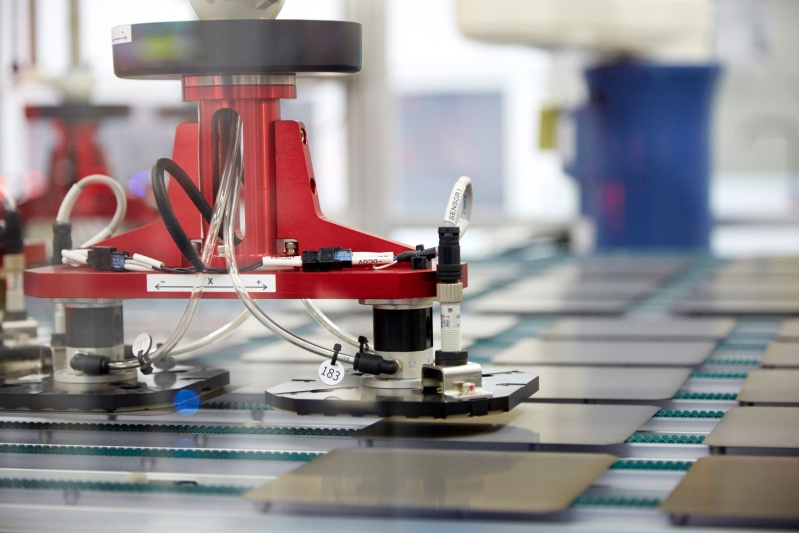South Korean solar module maker Hanwha Q Cells has filed a patent infringement lawsuit against Norwegian solar manufacturer REC Group, claiming its rival has used its patented solar cell passivation technology to increase the performance of its own products. The complaint against REC also claims that Sol Distribution and BayWa r.e. Solar Systems have distributed REC products in Australia that infringe on Hanwha Q Cells’ patented technology.
The new claims come off the back of separate lawsuits that Hanwha Q Cells lodged against Chinese panel makers Jinko Solar and Longi Solar in Australia just weeks ago.
The Australian patent fight follows similar allegations in the U.S. and Germany. At the start of this month, Hanwha Q Cells lodged a patent infringement lawsuit against Jinko and REC in Germany, as well as two more against the same companies plus Longi in the U.S., based on the same claims. In complaints lodged with the U.S. International Trade Commission (ITC), the U.S. District Court in Delaware and the Regional Court of Düsseldorf, Hanwha Q Cells is seeking court orders to prohibit its rivals from importing and selling products it claims are in violation of its patents.
In a statement released by its Australian arm, Hanwha Q Cells said the latest lawsuit was lodged with the same aim, to stop the three companies from importing, marketing and selling what it claims are products that violate its patents in Australia.
“We do not tolerate the infringement of our intellectual property rights and we will vigorously defend our technology from being unfairly used,” said Hee Cheul (Charles) Kim, chief executive officer of Hanwha Q Cells & Advanced Materials Corp. “Hanwha Q Cells remains fully committed to serving the needs of the Australian market and we have no intention to cause inconvenience to customers, be they EPC contractors, distributors, or installers. We believe these legal actions will contribute to the long-term, healthy development of the solar energy industry.”
REC's response
REC said it was investigating the claims in Germany and the U.S. and would take all necessary steps to defend itself against patent infringement allegations. It also confirmed at the time that it had not received any notifications from the U.S. District Court in Delaware in relation to one of the two lawsuits filed against it by Hanwha in the U.S. Regarding the second case, REC said the ITC had received an infringement complaint from Hanwha and had 30 days to carry out a preliminary investigation. If the ITC decides there is a case to answer, it will contact REC.
Meanwhile, it was confirmed that Hanwha Q Cells has paid a fee to the Duesseldorf district court, which was a precondition for legal action to begin in Germany. The court has ordered a written preliminary procedure for the defendants to show their readiness. “At a later date, a hearing date will be determined,” a Duesseldorf district court spokeswoman told pv magazine mid March.
Jinko has categorically refuted allegations that it was using Hanwha Q Cells’ passivation technology on its cells, adding it did not expect any disruptions to normal operations as a result of the lawsuit. “Based on Jinko Solar’s preliminary analysis of Hanwha’s complaints and the asserted patents, the company believes that the complaints are without technical or legal merit,” Jinko said in an earlier statement.
Noting that it had not yet been notified of legal action by its Korean rival, monocrystalline module maker Longi claimed there was considerable uncertainty over the validity of the patents at the root of the lawsuits. The Xi’an-based company said the disputed patents related to atomic layer deposition (ALD) technology. Longi said it uses a plasma-enhanced chemical vapor deposition (PECVD) process.
As noted in Hanwha Q Cells’ earlier statement, the Australian patent claims are not restricted to any method of manufacture, such as ALD or PECVD. Hanwha Q Cells says the claims — and their equivalents in the U.S. and Germany — are directed at a solar cell structure with a first dielectric layer including aluminum oxide and a second dielectric layer that contains hydrogen.
In a statement filed to pv magazine on Monday, BayWa r.e. dismissed Hanwha Q-Cells’ claim, and noted its day-to-day business would not be affected. “BayWa r.e.’s view is that the claim filed by Hanwha against BayWa r.e. is without technical and legal merit. BayWa r.e. fully respects intellectual property rights and takes any allegations to the contrary very seriously,” said Durmus Yildiz, Managing Director of BayWa r.e. Australia.
“BayWa r.e. will continue to investigate the allegations and co-operate with its supply chain partners to take all steps necessary to defend itself against the claim,“ Yildiz added, noting the company will continue to keep its customers and partners fully apprised of any developments.
pv magazine has approached REC Group and Sol Distribution for comment on the Australian lawsuits.
This content is protected by copyright and may not be reused. If you want to cooperate with us and would like to reuse some of our content, please contact: editors@pv-magazine.com.




1 comment
By submitting this form you agree to pv magazine using your data for the purposes of publishing your comment.
Your personal data will only be disclosed or otherwise transmitted to third parties for the purposes of spam filtering or if this is necessary for technical maintenance of the website. Any other transfer to third parties will not take place unless this is justified on the basis of applicable data protection regulations or if pv magazine is legally obliged to do so.
You may revoke this consent at any time with effect for the future, in which case your personal data will be deleted immediately. Otherwise, your data will be deleted if pv magazine has processed your request or the purpose of data storage is fulfilled.
Further information on data privacy can be found in our Data Protection Policy.